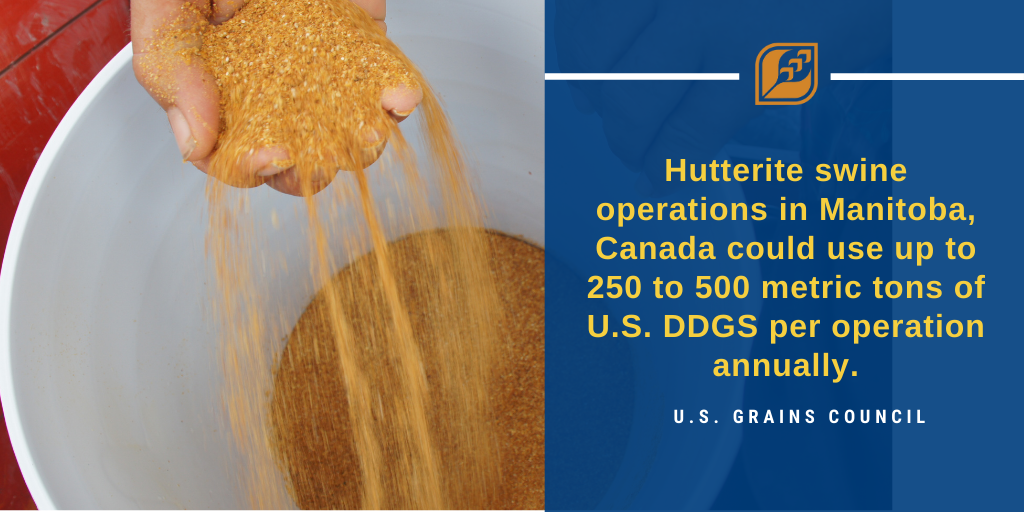Capitalizing on successful virtual engagement with the Mennonite community in Southeast Mexico, the U.S. Grains Council (USGC) recently began promotion of the nutritional and economical value of U.S. distiller’s dried grains with solubles (DDGS) with Hutterite swine producers in western Canada.
Mennonites, Hutterites and Amish all share a similar religious origin. Like the Mennonites in Mexico, the Hutterites in Canada live communally in village-like settlements centered around their farming operations. Typical swine diets in a Hutterite colony contain wheat, barley, corn and soybean meal. These producers have typically avoided DDGS as a feed ingredient due to unfamiliarity with the feed ingredient’s performance and questions about procurement, storage and other factors.
The Council partnered with Gowans Feed Consulting and Western Ag Supply to address these concerns through a webinar in mid-November. The program also included the latest market information on corn, soybeans and DDGS as well as a value analysis of DDGS specifically for use in swine operations. Ryan Slozka, a trader with U.S. Commodities, joined the webinar to help provide additional insights into the production, marketing and quality of DDGS.
“This information was extremely valuable to end-users and producers,” said Tom Dowler, director at Gowans Feed Consulting. “The program provided insight into current and future market trends and projections, as well as information on how to establish value compared to other feed ingredients and identify buying opportunities.”
Thirty-six participants, including Hutterite swine producers who had not previously participated in USGC programs and other Western Canadian end-users, attended the webinar. An additional 10 swine producers who were unable to attend received a recorded version of the program.
The Council provided these attendees with a list of USGC members that can supply U.S. DDGS directly into the region, allowing these producers to continue conversations with potential suppliers for their operations. The Hutterite swine operations in Manitoba could use up to 250 to 500 metric tons of U.S. DDGS per operation annually, translating to untapped market potential of 50,000 tons of U.S. DDGS in Manitoba alone and 100,000 tons across all of the Hutterite colony swine operations in Western Canada. Even more potential could be realized if DDGS inclusion would spread to use in Hutterite poultry, dairy and beef production.
“These producers are interested in the nutritional value of DDGS and have already requested additional information on the benefits of including DDGS in swine rations,” said Emily Byron, USGC manager of global programs. “We will continue to engage these producers to help bring additional value to their operations by promoting high-quality and cost-effective U.S. coarse grains and co-products.”
About The U.S. Grains Council
The U.S. Grains Council develops export markets for U.S. barley, corn, sorghum and related products including distiller’s dried grains with solubles (DDGS) and ethanol. With full-time presence in 28 locations, the Council operates programs in more than 50 countries and the European Union. The Council believes exports are vital to global economic development and to U.S. agriculture’s profitability. Detailed information about the Council and its programs is online at www.grains.org.

